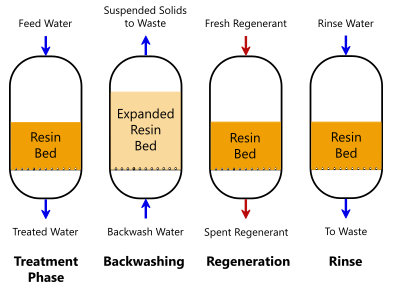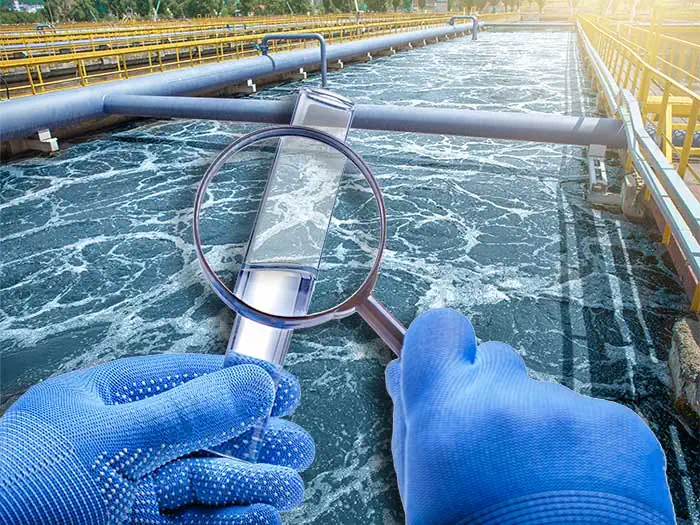Exactly How PFAS Therapy Makes Sure Clean and Sustainable Water
The presence of PFAS, typically known as "forever chemicals," positions significant challenges to water high quality and public health. The effects of these therapies expand past prompt health advantages; they elevate critical questions concerning lasting water administration methods that should be addressed to ensure a resistant future.

Recognizing PFAS Contamination
PFAS, or per- and polyfluoroalkyl materials, have actually emerged as a significant environmental issue because of their extensive frequency and perseverance in the setting. These artificial chemicals have actually been made use of in numerous commercial applications and customer items, consisting of non-stick cooking equipment, waterproof clothing, and food product packaging, as a result of their unique residential or commercial properties such as water and grease resistance.
The contamination of soil and water sources by PFAS occurs largely via commercial discharges, firefighting foam use, and seeping from garbage dumps. pfas management. When released, these substances are immune to destruction, bring about their buildup in the atmosphere. This determination increases vital problems, as PFAS can travel cross countries via groundwater and surface area water supply, impacting drinking water materials and environments

Health Dangers of PFAS
The determination of PFAS in the atmosphere elevates substantial health and wellness worries for people subjected to these compounds. Understood as "permanently chemicals," PFAS do not break down easily and can accumulate in human bodies with time. Study has actually connected PFAS exposure to various adverse wellness results, consisting of immune system dysfunction, liver damages, and raised risk of particular cancers cells - pfas management. Significantly, studies have actually revealed raised cholesterol levels and possible influence on reproductive and developmental health, specifically in expecting individuals and babies.
The ubiquity of PFAS in consumer items, such as non-stick cooking equipment, water-repellent materials, and food product packaging, further magnifies the risk of direct exposure. Consuming alcohol water polluted with PFAS is a significant issue, as these chemicals can seep into groundwater sources. At risk populations, consisting of youngsters and those living near industrial sites, might face increased threats as a result of their developing systems and prospective for greater exposure levels.
As understanding of these wellness risks remains to expand, governing agencies are beginning to develop standards for PFAS levels in drinking water. Public health and wellness campaigns are necessary to alleviate direct exposure and safeguard neighborhoods from the lasting results of these dangerous compounds.

Cutting-edge Treatment Technologies
How can we properly deal with the challenges presented by PFAS contamination in water resources? Ingenious therapy modern technologies are becoming critical services in the pursuit for clean water. These techniques concentrate on the removal or devastation of per- and polyfluoroalkyl substances (PFAS), which are well-known for their perseverance in the environment.
One appealing strategy is adsorption using innovative products, such as activated carbon and ion exchange resins. These products have actually shown effectiveness in recording PFAS particles from water. Another notable modern technology is membrane filtering, which uses nanofiltration and turn around osmosis to separate contaminants at the molecular level, hence giving a barrier pfas treatment against PFAS.
Furthermore, progressed oxidation procedures (AOPs) employ strong oxidants to break down PFAS compounds right into safe results. This method is particularly efficient for dealing with very contaminated water sources. Bioremediation techniques, employing particular bacteria, are likewise being checked out to break down PFAS.
As study proceeds, crossbreed systems that incorporate numerous modern technologies might supply boosted efficiency, resolving the intricacies of PFAS contamination. The growth and execution of these cutting-edge therapy modern technologies are crucial actions towards making sure the security and sustainability of our water sources.
Benefits of Effective PFAS Treatment
Efficiently treating PFAS contamination in water resources substantially improves public health and ecological security. PFAS, frequently referred to as "for life chemicals," are resistant to destruction and can collect in the human body, leading to significant health and wellness risks such as cancer cells, liver damage, and body immune system disorder. By implementing reliable treatment approaches, neighborhoods can reduce direct exposure to these hazardous materials, eventually boosting the health and wellness end results of their populations.
In addition, successful PFAS therapy contributes to the conservation of local ecological communities. Polluted water can detrimentally impact aquatic life and interrupt the fragile balance of neighborhood habitats. By making sure tidy water, treatment procedures protect biodiversity and preserve eco-friendly integrity.
Furthermore, effective PFAS remediation can cultivate public confidence in water high quality. When areas are assured that their drinking water is devoid of dangerous contaminants, it advertises a feeling of safety and wellness. This trust fund is important for area interaction and assistance for ongoing water administration campaigns.
Future of Water Sustainability
In the middle of growing issues concerning water top quality and scarcity, the future of water sustainability pivots on cutting-edge methods and collective initiatives. As areas encounter the impending threats of pollutants like PFAS, the growth of innovative therapy technologies is important. These innovations not just concentrate on the elimination of harmful compounds however additionally advertise the reuse and recycling of water, consequently lowering total need.
Moreover, efficient water governance plays a critical duty in making certain sustainable practices. Policymakers should integrate scientific research study with regulative frameworks to establish clear guidelines for water usage and treatment. Stakeholder engagement, including local areas and sectors, cultivates a sense of shared responsibility and encourages sustainable practices throughout various industries.
Investment in infrastructure is also critical; updating aging systems to incorporate modern purification and filtration techniques can considerably enhance water top quality. In addition, accepting eco-friendly technologies, such as natural purification systems, can give green options.
Eventually, the future of water sustainability depends on a holistic strategy that integrates technology, policy, and community involvement. By prioritizing these elements, we can protect our water sources for generations ahead, making certain tidy and lasting water for all.
Final Thought
Finally, the reliable treatment of PFAS is important for making certain clean and lasting water. By employing advanced innovations such as activated carbon adsorption, membrane layer purification, and advanced oxidation processes, areas can considerably minimize the health risks connected with these impurities. Furthermore, the combination of these therapy approaches sustains community security and improves biodiversity. Inevitably, durable PFAS therapy approaches add to long-term resilience in water management, promoting public count on water top quality and advertising lasting techniques.